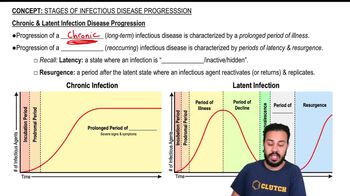Here are the essential concepts you must grasp in order to answer the question correctly.
Oxidative Burst
The oxidative burst is a rapid release of reactive oxygen species (ROS) from neutrophils and other phagocytes upon activation. This process is crucial for killing pathogens, as the ROS can damage cellular components of bacteria and fungi, leading to their destruction. In conditions like X-linked chronic granulomatous disease, the inability to generate an oxidative burst significantly impairs the immune response.
Recommended video:
Neutrophils
Neutrophils are a type of white blood cell that play a vital role in the innate immune system. They are among the first responders to sites of infection, where they engulf and destroy pathogens through phagocytosis and the oxidative burst. A deficiency in neutrophil function, as seen in chronic granulomatous disease, leads to increased susceptibility to infections, particularly from catalase-positive organisms.
Recommended video:
X-linked Chronic Granulomatous Disease (CGD)
X-linked chronic granulomatous disease is a genetic disorder caused by mutations in genes responsible for the production of components of the NADPH oxidase complex, which is essential for the oxidative burst. Patients with CGD have neutrophils that cannot effectively produce ROS, making them more vulnerable to recurrent bacterial and fungal infections. Understanding this condition highlights the importance of the oxidative burst in immune defense.
Recommended video:
Chronic & Latent Infection Disease Progression
 Verified step by step guidance
Verified step by step guidance Verified Solution
Verified Solution



 2:19m
2:19m